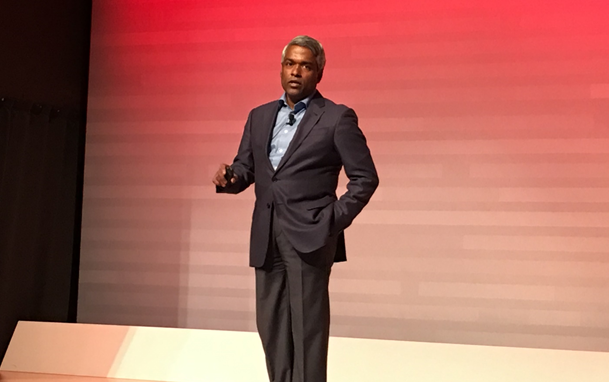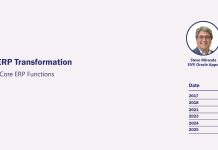Assembling all the pieces needed to win in the Cloud, Oracle is in it for the long haul.
That’s the conclusion of a full-day analyst briefing as Oracle unveiled a bevy of new products and initiatives for its Infrastructure As A Service and Platform As A Service offerings.
The January 2018 event followed the $9.3-billion acquisition of NetSuite in November 2016 when the vendor narrowed its gap with Service As A Service market leader Salesforce in the biggest Cloud category, which is projected to top $70 billion in 2018.
While it’s possible for the vendor to leapfrog Salesforce in the SaaS category over the next five years, it would be a stretch for Oracle to pose any significant threat to Amazon Web Service in the IaaS category in the near future given the tremendous head start that AWS has enjoyed.
Unless someone is bold enough to acquire a bunch of telcos to stitch together a global infrastructure, chances of anyone trying to catch up with AWS through acquisitions are pretty slim since doing so would be prohibitively expensive.
That’s why Oracle is going slow, but deliberate. Two things stand out during the analyst event.
First, Oracle’s IaaS strategy rests with building the data center of the future with a host of services and technologies that piggy back on its Autonomous Database, which will become generally available in 2018. The construct is that all the tasks associated with data processing, deployment, Database As A Service, Data Warehouse As A Service, DevOps, and analytics will be integrated, provisioned and fully tested and tuned to one’s specifications – all done autonomously to save time and labor while optimizing ROI.
If a company decides to reduce its data center footprint by migrating to the Cloud for extensive infrastructure support and delivery, Oracle will be there taking care of the heavy lifting. Oracle is essentially assuming the burden that is no longer palatable to CXOs who are keen on taking the concept of business-process outsourcing further via data-center outsourcing.
Thomas Kurian, Oracle president in charge of product development, calls this “seamless extension to on-premise Datacenter.’’ Companies like AT&T are migrating thousands of their databases and the associated applications workloads to Oracle Cloud.
Second, such an extension will help facilitate the enterprise lift and shift that is underway for Oracle customers to redistribute their workloads, again outsourcing both Oracle and non-Oracle workloads that encompass an assortment of databases, applications along with emerging technologies like Blockchain, chatbots, Internet of Things as well as the interplay between physical assets and virtual replicas in what Oracle considers Digital Twin.
Oracle Blockchain As A Service will be available in March 2018, while another new product called Oracle Data Catalog, which covers the source and history of the data for the Autonomous Data Processing platform, will go GA later this year.
The key is that since many of its customers need to move their workloads to the Cloud in order to help them transform their operations digitally, who better than Oracle can handle the lift and shift given much of their assets is already based on Oracle databases, apps and middleware technologies?
For its part, Kurian promises 75% of PaaS and SaaS workloads at Oracle will run on Oracle IaaS later this year, underscoring the readiness of Oracle IaaS to meet its own stringent performance requirements as well as those of its customers.
Competitors, on the other hand, will have a hard time replicating and optimizing the migration processes, not to mention the integrated, security, manageability and ultimately accountability issues that Oracle is investing considerable resources to address and resolve on behalf of its customers.
What these entails, according to Senior Vice President Amit Zavery, who heads Oracle Cloud Platform Development, is that customers are outsourcing risk to Oracle, which is very different from what they are getting from other IaaS and PaaS providers that are simply touting price and availability as their raison d’être.
Oracle also guarantees low price and abundant availability after spending years to build out its global infrastructure in 16 regions from Australia to Switzerland. Oracle does not have a seven-year start compared with AWS. What it has is a laser-focus approach to address the peace of mind issue, which may well be the overriding reason customers prefer Oracle Cloud over others.
Please follow this link for a complementary read of the Oracle’s Cloud Top 500 profile.






